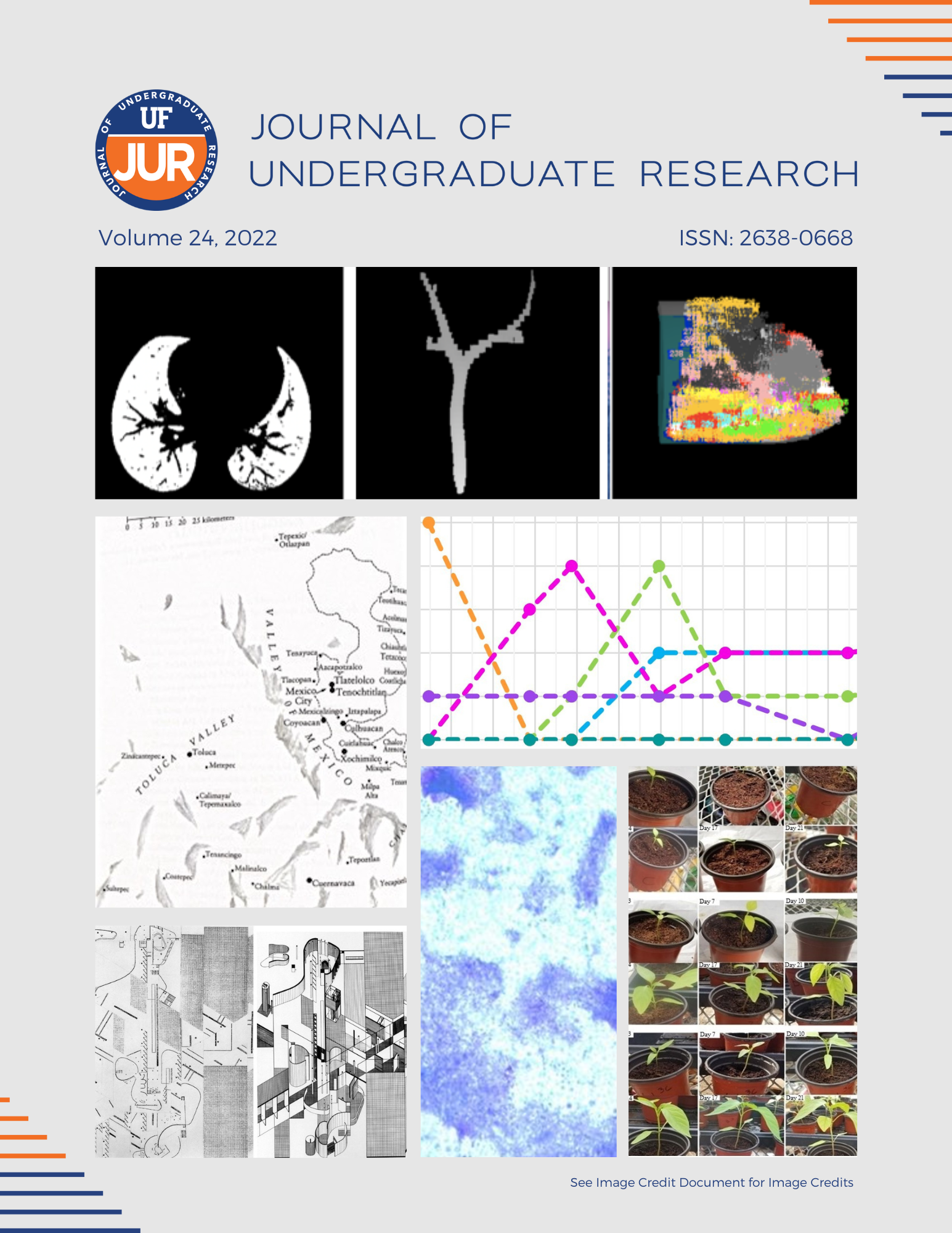Novel Small Molecule Inhibitor of Osteoclast Differentiation
DOI:
https://doi.org/10.32473/ufjur.24.130745Keywords:
RANK, Osteoclast, Osteoblast, EVAbstract
Osteoporosis results in over a million bone fractures each year despite current therapeutics that inhibit bone resorption. The need for better anti-osteoporotic therapeutics is clear. Recently, extracellular vesicles (EVs) containing RANK that are released by osteoclasts and serve as novel regulators of bone remodeling were identified. These RANK-containing EVs both block bone resorption by osteoclasts and stimulate a RANKL reverse signaling pathway in osteoblasts that promotes bone formation. Small molecules with the same activity could prove to be a new class of therapeutic for treatment of bone disease. To seek such small molecules, a virtual screen identified small molecules that were predicted to bind RANKL in the same location as RANK, and an initial cell culture screen showed eighteen of the candidates reduced osteoclast formation in vitro at a concentration of 100 μM. In this project, one candidate, 3-Nitro-4-phosphobenzoic acid (NPA), was examined in greater detail. NPA does-dependently reduced recombinant RANKL-stimulated differentiation of RAW 264.7 cells into osteoclast-like cells with an IC50 of 38 μM. In calcitriol-stimulated mouse marrow, primary cultures that produce both osteoblasts and osteoclasts, NPA (50 μM) reduced osteoclast formation by 88%, while alkaline phosphatase positive osteoblast numbers were higher. These data show that NPA, in cell culture, is able to simultaneously inhibit osteoclast differentiation and promote osteoblast formation. Thus, NPA is a candidate to be a lead molecule for novel dual-function, small molecule, therapeutic agents to treat osteoporosis.
Metrics
Downloads
Published
Issue
Section
License
Copyright (c) 2022 Macey Martin, Shannon, David Ostrov

This work is licensed under a Creative Commons Attribution-NonCommercial 4.0 International License.
Some journals stipulate that submitted articles cannot be under consideration for publication or published in another journal. The student-author and mentor have the option of determining which journal the paper will be submitted to first. UF JUR accepts papers that have been published in other journals or might be published in the future. It is the responsibility of the student-author and mentor to determine whether another journal will accept a paper that has been published in UF JUR.

